Human Diseases: Bacterial, Viral, Protozoan, Helminths, Fungal and Non-communicable diseases
What is a disease?
The disease is an illness in the body of an organism. It can be caused by a pathogen (disease causing germs) or any other internal dysfunction.
Pathogen: A diseases causing organism is called a pathogen. e.g., Typhoid is caused by Salmonella typhi.
Host: An organism in which a disease-causing organism resides and causes the infection.
Vector: Those living organisms that carry the disease-causing organism from one host to another are called vectors. e.g., Malaria is caused by the Plasmodium falciparum, and it is transmitted through the female Anopheles mosquito. It means that the female Anopheles mosquito carries the Plasmodium from one host to another host.
Carrier: An individual who carries the infection but does not show any symptoms. Such types of individuals are called asymptomatic carriers.
1. Category of Diseases:
Diseases can be categorised into various types based on –
- Extent of occurrence: Epidemic, Endemic, Pandemic
- Communicability: Communicable human disease (caused due to germs), Non-communicable Disease (caused due to the body’s own poor functioning).
- Kinds of pathogens: Whether the disease is caused by bacteria, virus, or any other germs (pathogen).
- Kinds of transmitting agents: Food-borne, water-borne, air-borne, insect-borne, etc.
- Hereditary disease: Diseases that occur due to abnormalities in DNA sequence and chromosome structures. e.g., Turner syndrome, haemophilia. Such types of diseases may transfer from parents to offspring (i.e., Children).
- Iatrogenic disease: Such diseases induced as a result of diagnostic and therapeutic procedures undertaken on a patient, e.g., Hair loss, vomiting, nausea
- Idiopathic disease: In which the cause of the disease is unknown, e.g., Pulmonary fibrosis.
- Congenital disease: Those diseases present in an individual from birth, e.g., Cleft lip and cleft palate, heart conditions, etc.
- Acquired disease: That disease that develops after birth, e.g., Salmonella infections, influenza, HIV, botulism
1.1. Categories of disease based on the extent of occurrence
- Endemic disease: - When the disease is found in a particular area only and attack a few people only.
- For example; goitre in sub-Himalayan regions, Yellow fever & Malaria in African countries only.
- Epidemic disease: Epidemic diseases affect the large population in a particular region, state, or country at a particular time. For example, the plague in India in 1994 (from Surat to many other places of India).
- Pandemic disease: When the disease spreads worldwide and affects the huge population of the world. E.g., AIDS, COVID 19 (Coronavirus).
1.2. Categories of diseases based on communicability
Human Diseases can be categorized into infectious (or communicable) and non-infectious (non-communicable).
1.2.1. Non-infectious (non-communicable) diseases
- These diseases are not transmitted from one person to another.
- Cancer is an example of a non-infectious (non-communicable) disease.
- These can be classified into two groups.
- Lifestyle diseases like diabetes, hypertension, heart diseases, stroke and cancer.
- Mental disorders like Schizophrenia, Alzheimer’s disease.
1.2.2. Infectious (communicable) diseases
- Infectious diseases are transmitted from one person to another.
- AIDS is an example of an infectious (or communicable) disease.
- Disease-causing organisms are called pathogens.
- Vectors are organisms that transmit disease from one person to another. For example, the female Culex mosquito is the vector of filariasis.
Below is a comprehensive list of human diseases explained one by one:
2. Communicable diseases
2.1. Human diseases caused by Protozoa or Protozoan diseases
Malaria
- Malaria parasite, Plasmodium was first discovered by Charles Leveran. Ronald Ross confirmed that the malaria parasite causes Malaria. He also told that mosquito is the carrier of Malaria.
- Plasmodium is a protozoan, i.e. it belongs to protozoa. P. vivax, P. malaria and P. falciparum are its some species. Out of these species, Plasmodium falciparum causes malignant malaria. It is the most serious one. It can even cause death.
- Quinine is used in the treatment of malaria. It is obtained from the bark of the cinchona tree.
|
Protozoan diseases or diseases caused by protozoa in humans |
|||||
|
Disease |
Malaria |
Diarrhoea |
Kala-azar |
Sleeping sickness |
Pyorrhoea |
|
Affected organ |
RBC and Liver |
Intestine |
Bone marrow |
Brain |
Gums |
|
Name of parasite |
Plasmodium |
Entamoeba histolytica (spread through house flies) |
Leishmania donovani |
Trypanosoma |
Entamoeba gingivelis |
|
Carrier/transmission |
Female Anopheles |
Contaminated food |
Sand flies |
Tse-Tse flies |
- |
2.2. Bacterial diseases or human diseases caused by bacteria
- Tuberculosis: Tuberculosis is caused by Mycobacterium tuberculosis. It commonly affects the lungs. It is also called the white plague.
- Tetanus or Lock Jaw: It is caused by Clostridium tetani. It affects the nervous system.
- Cholera: Vibrio cholera is its causative organism. It affects the intestine.
- Typhoid: It is caused by Salmonella typhi. It affects the intestine. Widal test is used to confirm typhoid fever.
- Leprosy: It is caused by Mycobacterium leprae. It affects the nervous system.
|
Bacterial diseases or diseases caused by bacteria in humans |
|||||
|
Disease |
Diphtheria |
Plague |
Whooping cough |
Pneumonia |
Gonorrhea |
|
Affected organ |
Respiratory tube |
Lungs |
Respiratory system |
Lungs |
Urinary path |
|
Name of bacteria |
Corynebacterium diphtheriae |
Pasteurella pesties |
Hemophilis pertusis |
Diplococcus pneumoniae |
Neisseria gonorrhoea |
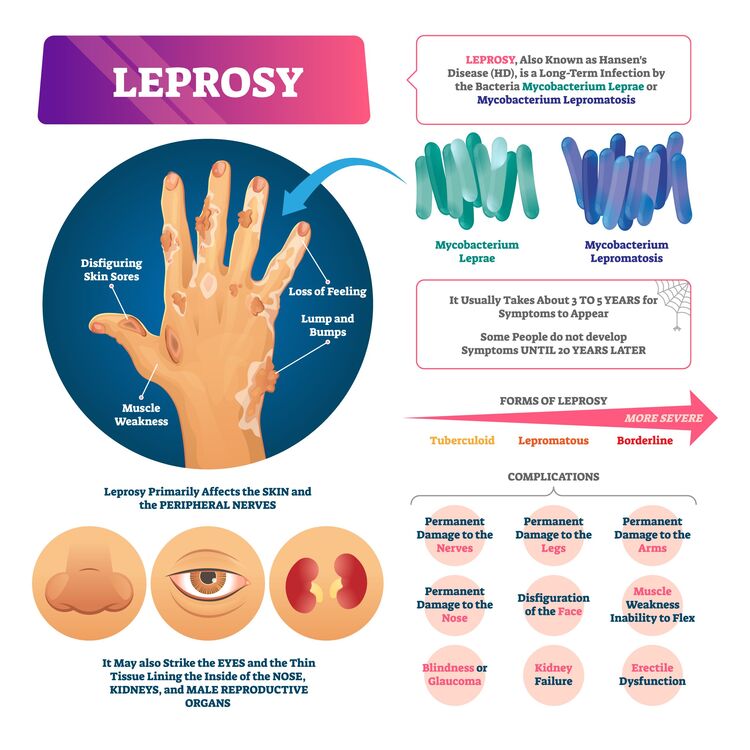
Fig.1: Leprosy
2.3. Viral diseases or human diseases caused by viruses
2.3.1. Acquired Immunodeficiency Syndrome (AIDS)
- It is caused by Human Immunodeficiency Virus (HIV). HIV is a retrovirus (a virus with RNA as genetic material).
- The transmission of AIDS happens through sexual contact, blood transfusions (by the use of infected needles) and from mother to child.
- ELISA is a test for AIDS. The full form of ELISA is Enzyme-Linked Immunosorbent Assay.
2.3.2. Hepatitis
It causes inflammation of the liver. It is mainly of five types (hepatitis-A, hepatitis-B, hepatitis-C, hepatitis-D and hepatitis-E).
- Hepatitis-A is prevented through vaccination, sanitation, good hygiene, etc. It is a highly contagious liver infection.
- Hepatitis-B is mainly transmitted via body fluids (semen & vaginal fluids). It is not transmitted through saliva, tears, etc. It is mainly prevented through vaccination.
- Hepatitis-C: Its transmission occurs through the use of the intravenous drug or blood transfusion from the infected individual. Hepatitis C cannot be prevented through vaccination. There is presently no effective vaccine against hepatitis C.
- Hepatitis-D: Hepatitis D virus (HDV) is a virus that requires hepatitis B virus (HBV) for its replication. Hepatitis D virus (HDV) affects globally nearly 5% of people who have a chronic infection with hepatitis B virus (HBV). Hepatitis D infection can be prevented by hepatitis B immunization, but treatment success rates are low.
- Hepatitis-E: It is an inflammation of the liver caused by infection with the hepatitis E virus (HEV). The virus is transmitted via the fecal-oral route, principally via contaminated water.
|
Viral diseases or diseases caused by viruses in humans |
||
|
Disease name |
Virus name |
Affected organ |
|
Dengue fever (break-bone fever) |
Dengue virus |
Whole body |
|
Polio |
Polio virus |
Throat, backbone |
|
Influenza (flu) |
Mixo virus |
Whole body |
|
Small pox |
Varicella virus |
Whole body |
|
Chicken pox |
Variola virus |
Whole body |
|
Measles |
Morbeli virus |
Whole body |
|
Rabies |
Rabies virus |
Nervous system |
|
Meningitis |
- |
Brain |
|
Herpes |
Herpes simplex virus |
Skin |
|
Yellow fever |
Yellow fever virus |
- |
|
Chikungunya |
Chikungunya virus |
- |
| COVID-19 | SarsCov2 | Whole body |

Fig.2: Diseases caused by a virus in humans
2.4. Helminths diseases or diseases caused by helminths
- Lymphatic Filariasis or Elephantiasis: Wuchereria Bancroft, Brugia Malayi, and Brugia timori cause this disease. These are a roundworm. The disease is transmitted through Culex mosquitoes. The disease affects the lymphatic system and can lead to the abnormal enlargement of body parts, causing pain and severe disability.
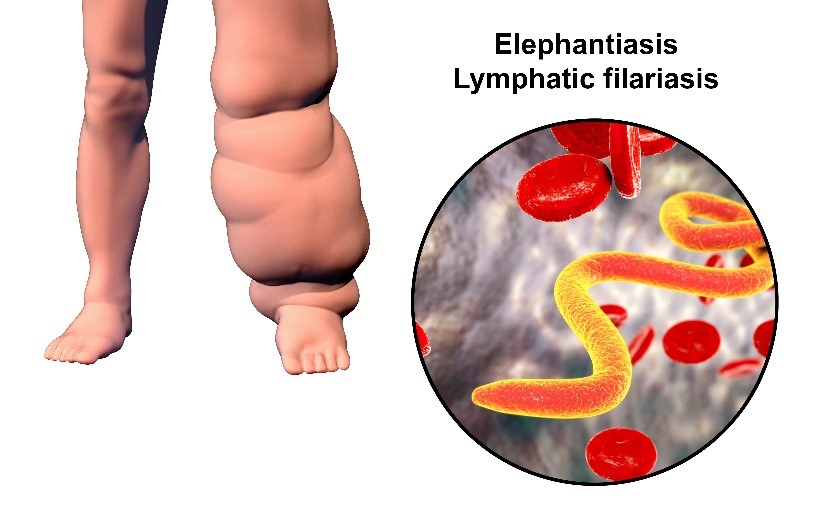
Fig.3: Elephantiasis or Lymphatic Filariasis
- Taeniasis: It is caused by Taenia saginata (beef tapeworm), Taenia solium (pork tapeworm). These tapeworms infect humans who eat raw or undercooked beef or pork.
- Ascariasis: It is caused by Ascaris lumibricoides. It is transmitted through contamination with faeces.
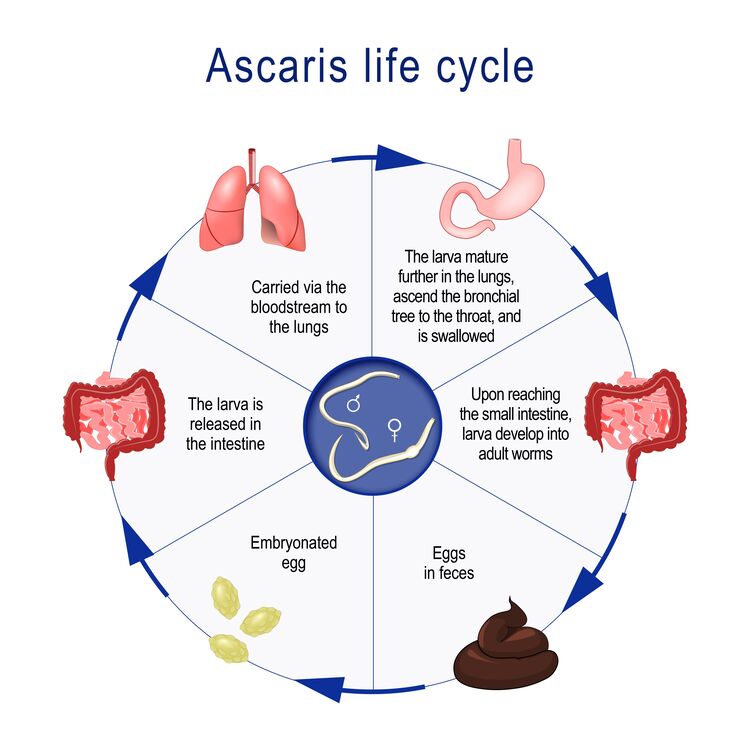
Fig.4: Ascariasis
2.5. Fungal diseases or human diseases caused by fungi
- Athlete’s foot: Tinea pedis causes this disease. This is a skin infection caused by the cracking of the feet.
- Baldness: Tinea capitis causes it. The infection with Tinea capitis leads to hair fall.
- Ringworm: Trichophyton verrucosum causes it. A circular ring-like rash occurs that is usually red and itchy. It is spread by skin-to-skin contact or by touching an infected animal.
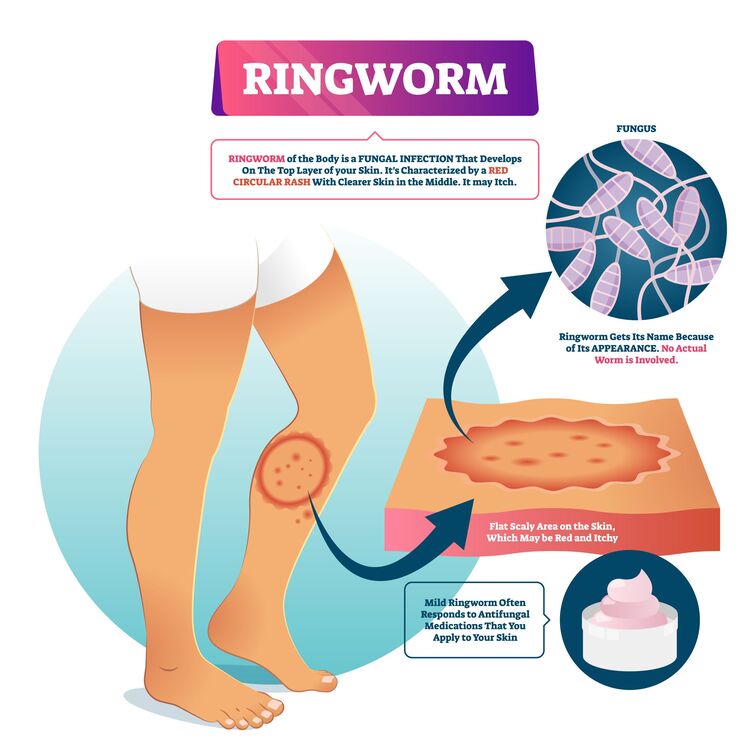
Fig.5: Ringworm
3. Non-communicable diseases
3.1. Mental Disorders
These are characterized by a mix of abnormal thoughts, emotions, perceptions, behavior, etc. There are various mental disorders like depression, schizophrenia, dementia, bipolar disorder, and developmental disorders. Access to effective treatments can alleviate the suffering caused due to mental disorders. Psychosocial support is a very important part of treatment.
- Depression: It is the most common mental disorder. Around 264 million people are affected globally due to depression. Sadness, Loss of interest or pleasure, feeling of guilt, disturbed sleep or appetite, tiredness, and poor concentration are the symptoms of depression.
- Bipolar disorder: It consists of both manic (irritable mood, over-activity, rapid speech, decreased need of sleep) and depressive episodes separated by periods of normal mood.
- Alzheimer’s disease: It is the most common form of dementia. Dementia is usually of a chronic or progressive nature in which there is deterioration inability to think. Alzheimer’s disease is named after Alois Alzheimer, who first described it in 1906. It is most often diagnosed in people who have crossed 65 years of age.
- Dyslexia: It is a learning disorder. It is also known as a reading disorder. Dyslexic children have difficulty in reading.
- Schizophrenia: In this disorder, a person’s perception of reality is altered. It mostly develops in the late teens or early adulthood. Distortions in thinking, perception, emotions, language, sense of self and behavior are some symptoms of Schizophrenia.
- Developmental Disorders: It is an umbrella term that covers intellectual disability and pervasive developmental disorders including autism. It usually originates in infancy or early childhood.
3.2. Diabetes
Diabetes is characterized by the accumulation of extra glucose in the blood. It is a non-communicable disease. It occurs when enough insulin is not produced in the human body (Type 1 Diabetes) or the human body does not use insulin properly (Type 2 Diabetes).

Type 1 Diabetes is mainly diagnosed in children and adults. Type 1 Diabetes can lead to diabetic ketoacidosis. In this, the body breaks down fat due to a lack of Insulin. Type 2 Diabetes is characterized by insulin resistance. It usually affects people having crossed the age of 40.
3.3. Cancer
Cancer refers to a condition in which cells divide and grow in an uncontrolled and unregulated manner. Masses of cells produced as a result of uncontrolled and unregulated growth and division of cells are called tumors. Tumors are of two types:
- Benign tumor: In benign tumors, abnormally proliferating cells do not spread to other areas of the body. Benign tumors cause little damage.
- Malignant tumor: In malignant tumors, proliferating cells spread to surrounding areas and are called neoplastic or tumor cells. Cells get transported through the blood and form a new tumor. This property is known as metastasis.
Cancer can be treated through chemotherapy, surgery, radiotherapy and immunotherapy. Cancer is of four types listed below.
- Carcinoma (Skin Cancer)
- Sarcoma (Cancer of bones, cartilage, muscles and connective tissue)
- Leukemia (Cancer of leukocytes, blood cancer)
- Lymphoma (Cancer of lymph nodes, Hodgkin’s disease)
3.4. Arthritis
It is a joint disorder characterized by inflammation of one or more joints. Joint pain and stiffness are the main symptoms of arthritis. Gout is a kind of arthritis that is most common in men. Osteoarthritis results from degeneration of cartilage.
3.5. Deficiency diseases
- Goitre: Iodine deficiency in diet results in enlargement (swelling) of the thyroid gland, known as goitre or goiter.
- Anaemia: This is caused by a lack of red blood cells or hemoglobin in the blood.
- Marasmus: This occurs in children of age less than one. It is a kind of severe malnutrition.
|
Some other deficiency diseases |
|||
|
Disease |
Deficiency |
Disease |
Deficiency |
|
Rickets |
Vitamin-D |
Scurvy |
Vitamin-C (Ascorbic acid) |
|
Beri-beri |
Vitamin-B1 (Thiamine) |
Night blindness (nyctalopia) |
Vitamin-A |
|
Pellagra |
Vitamin-B3 (Niacin) |
Pernicious anaemia |
Vitamin-B12 (Cobalamin) |
|
Osteporosis |
Calcium |
|
|
Read in detail about Deficiency Diseases caused by Vitamins and Minerals
4. Other diseases
- Haemophilia: It is a genetic disease. In this disease, blood’s clotting ability is affected. This disease mostly affects male people. Females are usually carriers of this disease.
- Emphysema: It is mainly caused by cigarette smoking. It is characterized by damage of alveolar walls and a decrease in the respiratory surface.
- Thalassemia: It is a genetic disease in which the body has less haemoglobin than normal. It can cause anaemia which leaves you fatigued.
- Sickle Cell Disease: It is a genetic red blood cells disorder in which RBCs have a deformed shape like a crescent that affects the level of haemoglobin in the body.
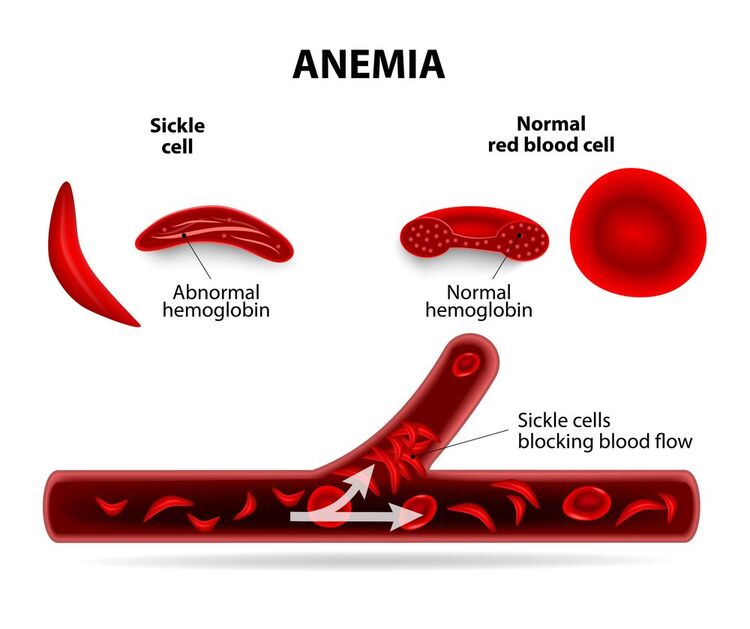
Fig.6: Sickle Cell Disease
5. Medical Instruments/ Techniques
- Pacemaker: It is a little-battery operated device. It detects irregular beating of the heart and causes the heart to beat at the correct pace.
- Angioplasty: Obstructed (blocked) arteries are widened through this technique.
- Angiography: It is used to visualize inside of blood vessels.
- Computed Tomographic Scan (CT Scan): This technique uses X-ray imaging and computers to visualize images of deep internal organs of the body.
- Magnetic Resonance Imaging (MRI): This technique uses magnetic fields and radio waves to produce images of body organs.
- Ultrasound Imaging (Sonography): In this technique, ultrasound (inaudible high-frequency sound waves) is used for generating images of internal parts of the body. Inaudible high-frequency sound waves in the 1-15 MHz range are generated through the Piezoelectric effect. This technique is used for detecting kidney stones, liver cirrhosis, gall bladder stones and fetal abnormalities.
- Electroencephalography (EEG): It is used to detect the activity of the brain.
- Positron Emission Tomography (PET): This technique is based on the detection of gamma rays.
6. Immunity
Immunity refers to the body’s ability to fight against the disease. It deals with foreign substances, e.g., bacteria, viruses, toxins, etc. entered inside the human body.
- Innate Immunity: Innate immunity is the immunity that you have when you are born. People are born with innate immunity. It is non-specific. It prevents pathogen entry into the body. Skin, tears in eyes, saliva in the mouth, stomach acids, certain leukocytes (WBC) and interferons (cytokine barriers) are part of innate immunity.
- Acquired Immunity: It is specific and acquired after birth. Specificity and memory are characteristic features of acquired immunity. It is of two types.
- Active immunity: It involves the production of antibodies in response to exposure of the body to antigens. It is slow. Immunisation induces active immunity.
- Passive immunity: It involves the direct transfer of ready-made antibodies into the body. Transfer of antibodies from mother to foetus through the placenta during pregnancy and antibodies (IgA) in the colostrum (yellowish fluid produced by mother in the starting days of lactation) are examples of passive immunity.
7. Antibodies
They are protein molecules. They are produced by B-lymphocytes. There are five classes of antibodies:
- IgG: main antibody in circulation
- IgA: main antibody in secretions
- IgE: involved in allergic responses
- IgM: largest antibody
- IgD: mainly found as membrane-bound
8. Vaccine and vaccination
Vaccination is the process in which dead or weakened germs are introduced in the body of a living being to develop immunity against the diseases. The material introduced in the individual's body is called a vaccine.
The vaccine contains weakened or killed the pathogen. When weakened or killed pathogens enter the body, they provide active acquired immunity to the human body.
There are four categories of vaccine:
1. Killed germs: TAB vaccine for Typhoid, Salk's vaccine for Poliomyelitis
2. Living weakened germs: Freeze-dried BCG vaccine for Tuberculosis.
3. Living fully poisonous germs: e.g., smallpox, in such type of vaccination, a person is immunized with the cowpox virus, which is almost similar to the smallpox virus.
4. Toxoids: In such type of vaccination, an inactivated toxin secreted by bacteria is introduced inside the individual, e.g., Diphtheria and tetanus.
|
Vaccine |
Disease |
|
DPT or DTP |
Diphtheria, Tetanus & Pertussis |
|
BCG |
Bacillus, Calmette-Guerin (Tuberculosis) |
|
OPV |
Oral Polio Vaccine |
9. Important Days related to Human Health and Disease
- World Cancer Day- 4 February
- National Deworming Day-10 February
- No Smoking Day- Second Wednesday of March
- World Down Syndrome Day- 21 March
- Anti- Tuberculosis Day – 24 March
- World Health Day – 7 April
- World Liver Day- 19 April
- World Malaria Day - 25 April
- World Immunisation Week - Last week of April
- World Red Cross Day and World Thalassaemia Day- 8 May
- National Dengue Day - 12 May
- World Anti-Tobacco Day - 31 May
- World Blood Donor Day - 14 June
- World Hepatitis Day - 28 July
- World Mosquito Day- 20 August
- World Suicide Prevention Day - 10 September
- World Alzheimer's Day - 21 September
- World Rabies Day – 28 September
- World Mental Health Day - 10 October
- World Arthritis Day - 12 October
- World Polio Day - 24 October
- World Immunisation Day - 10 November
- World Pneumonia Day - 12 November
- World Diabetes Day - 14 November
- World AIDS Day - 1 December
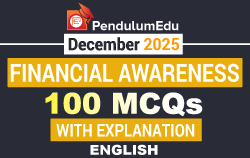



 Latest
Latest 



Comments